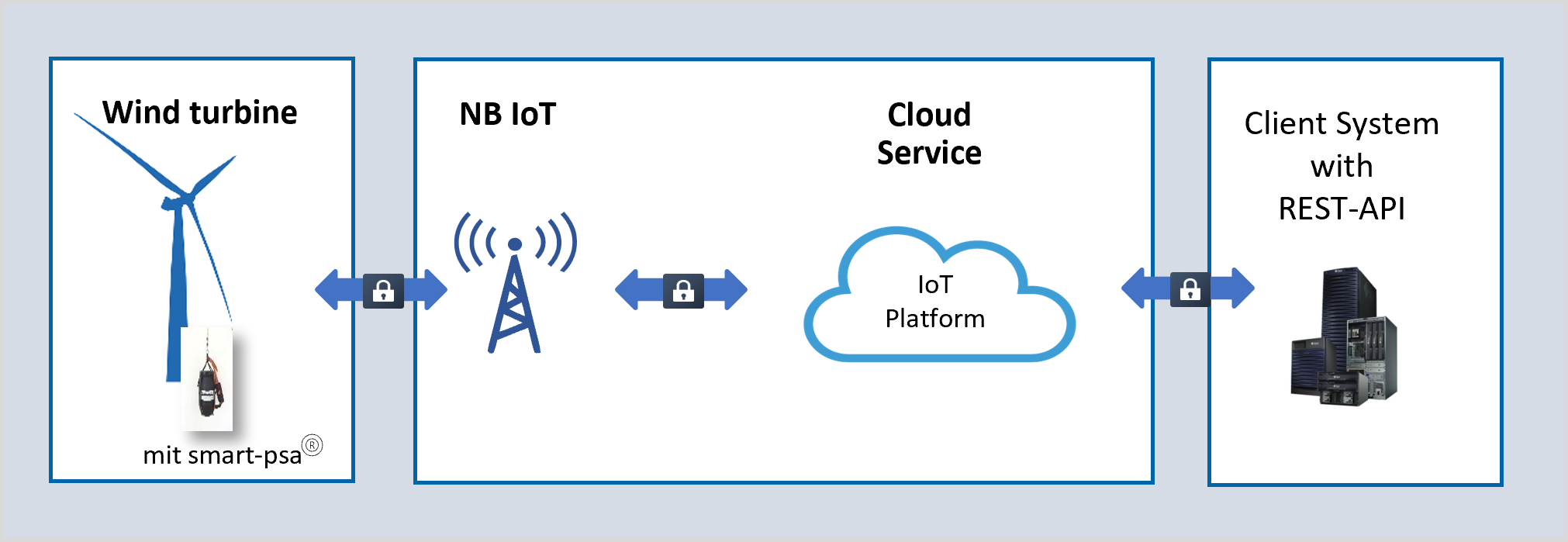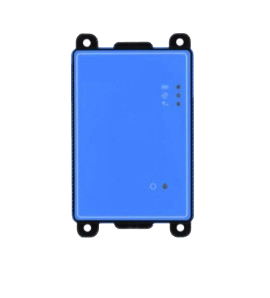Onshore Service Details
The smart-ppe® service for the
onshore sector
In the onshore area, we use two different radio network technologies from the field of so-called "Low Power Wide Area" (LPWA) technology for condition monitoring with the smart-psa® service to achieve optimal service quality. Both radio network technologies, or more precisely Narrowband IoT (NB-IoT) technologies, are characterised by very low energy requirements as well as high building penetration and range.
NB-IoT is a narrowband radio technology that is increasingly used by IoT sensors in remote locations that have few connectivity options and no external power source. Due to its energy efficiency and optimised signal range, NB-IoT is ideal for battery-powered devices, for example in the areas of smart metering, smart farming, asset tracking and precisely also for condition monitoring with smart-psa®.
When implementing smart-psa® in the onshore area, we decided to use NB-IoT technology so that the rescue equipment can be optimally monitored even under unfavourable radio conditions and at the same time the transmitters (trackers) used have the lowest possible energy consumption. For our BasicNet and BasicNet+ services we use sim-based NB-IoT technology, for the AdvancedNet service we use sim-less NB-IoT technology. The use of two NB-IoT technologies allows us to offer a true "global footprint" for monitoring the second escape route (rescue equipment) in onshore wind turbines. Our BasicNet service alone already covers 140 countries and enables continuous and efficient monitoring of the second escape route.
NB-IoT is a narrowband radio technology that is increasingly used by IoT sensors in remote locations that have few connectivity options and no external power source. Due to its energy efficiency and optimised signal range, NB-IoT is ideal for battery-powered devices, for example in the areas of smart metering, smart farming, asset tracking and precisely also for condition monitoring with smart-psa®.
When implementing smart-psa® in the onshore area, we decided to use NB-IoT technology so that the rescue equipment can be optimally monitored even under unfavourable radio conditions and at the same time the transmitters (trackers) used have the lowest possible energy consumption. For our BasicNet and BasicNet+ services we use sim-based NB-IoT technology, for the AdvancedNet service we use sim-less NB-IoT technology. The use of two NB-IoT technologies allows us to offer a true "global footprint" for monitoring the second escape route (rescue equipment) in onshore wind turbines. Our BasicNet service alone already covers 140 countries and enables continuous and efficient monitoring of the second escape route.
Condition monitoring in the onshore sector with smart-psa®

The trackers used for onshore applications have a standby time of more than 10 years with one status report per day. They are identical in terms of appearance, energy consumption and integrated sensors. The only difference is the implemented NB-IoT technology, which requires a SIM card and works without a SIM card.
NB-IoT Tracker with Sensors
for BasicNet and BasicNet+ service:
Temperature range: -40° C to +80° C Accuracy +- 0.5° C
Humidity range: 0% to 100% Accuracy +- 3%
Pressure sensor1: 300 to 1100 hPa Accuracy +- 1.7 hPa
Motion sensor: Accuracy 2mm
Light sensor: 15 lux
Waterproof, IP66
Standby time > 10 years
1Pressure sensor optional
Monitoring Data
Data acquisition from
- GPS position
- Temperature
- Humidity
- Pressure ration (optional)

Alarm data
Triggering alarms
- Removal of rescue equipment e.g. through theft
- Movement of the SHE Rescue Barrel by integrated 3-axis motion sensor
- Opening of the SHE Rescue Barrel by integrated light sensor


